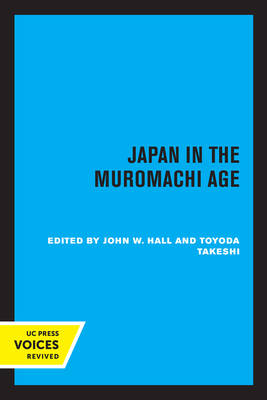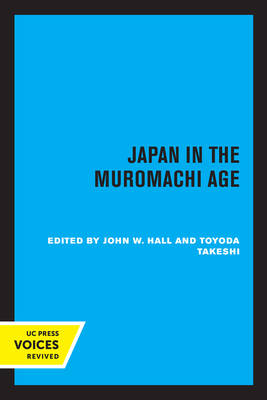
- Afhalen na 1 uur in een winkel met voorraad
- Gratis thuislevering in België vanaf € 30
- Ruim aanbod met 7 miljoen producten
- Afhalen na 1 uur in een winkel met voorraad
- Gratis thuislevering in België vanaf € 30
- Ruim aanbod met 7 miljoen producten
Zoeken
Japan in the Muromachi Age
Paperback | Engels
€ 84,95
+ 169 punten
Omschrijving
The Muromachi age may well emerge in the eyes of historians as one of the most seminal periods in Japanese history. So concluded the participants in the 1973 Conference on Japan. The proceedings, as edited for this volume, reveal this new interpretation of the Muromachi age (1334?1573), which was among the most neglected and misunderstood chapters in Japanese history. Both Western and Japanese scholars looked upon the period chiefly as an interlude between a classical era (the Heian period) and an early modern age (the Tokugawa period), the interim being regarded as a time of social confusion and institutional decay. As they learned more, historians saw the Muromachi age giving rise to new patterns that became important elements in a distinctly Japanese tradition; e.g., the arts of noh drama, suiboku painting, landscape gardening and the tea ceremony were perfected during Muromachi times.The volume brings together the work of Japanese and American specialists and shows that many features of Edo-period culture were anticipated by Muromachi developments. Although the volume was first published nearly three decades ago, it remains of great interest for anyone wanting to know more about Japan's historical development.
This title is part of UC Press's Voices Revived program, which commemorates University of California Press's mission to seek out and cultivate the brightest minds and give them voice, reach, and impact. Drawing on a backlist dating to 1893, Voices Revived makes high-quality, peer-reviewed scholarship accessible once again using print-on-demand technology. This title was originally published in 1977.
The Muromachi age may well emerge in the eyes of historians as one of the most seminal periods in Japanese history. So concluded the participants in the 1973 Conference on Japan. The proceedings, as edited for this volume, reveal this new interpretation o
This title is part of UC Press's Voices Revived program, which commemorates University of California Press's mission to seek out and cultivate the brightest minds and give them voice, reach, and impact. Drawing on a backlist dating to 1893, Voices Revived makes high-quality, peer-reviewed scholarship accessible once again using print-on-demand technology. This title was originally published in 1977.
The Muromachi age may well emerge in the eyes of historians as one of the most seminal periods in Japanese history. So concluded the participants in the 1973 Conference on Japan. The proceedings, as edited for this volume, reveal this new interpretation o
Specificaties
Betrokkenen
- Uitgeverij:
Inhoud
- Aantal bladzijden:
- 392
- Taal:
- Engels
Eigenschappen
- Productcode (EAN):
- 9780520325524
- Verschijningsdatum:
- 15/07/2022
- Uitvoering:
- Paperback
- Formaat:
- Trade paperback (VS)
- Afmetingen:
- 156 mm x 234 mm
- Gewicht:
- 603 g

Alleen bij Standaard Boekhandel
+ 169 punten op je klantenkaart van Standaard Boekhandel
Beoordelingen
We publiceren alleen reviews die voldoen aan de voorwaarden voor reviews. Bekijk onze voorwaarden voor reviews.










